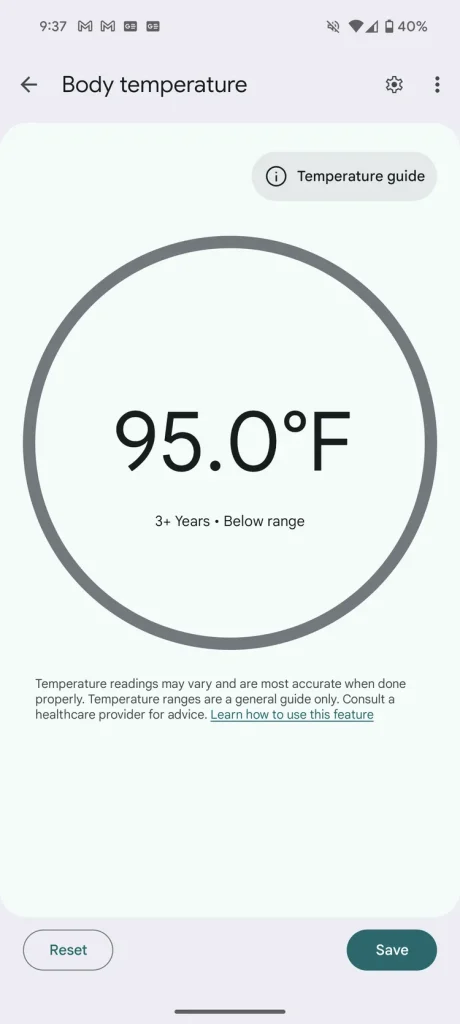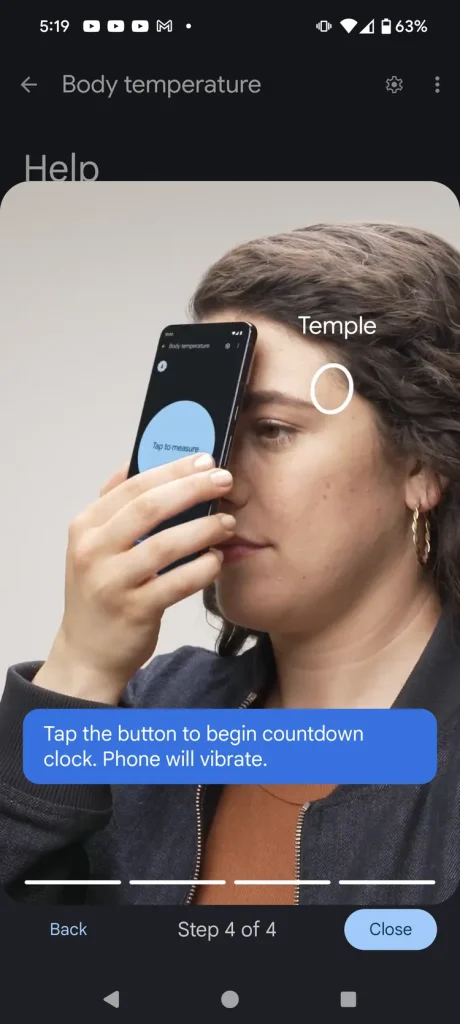Earlier this week, Google updated the Pixel 8 Pro to allow its unique temperature sensor to measure human body temperature. Unfortunately, after using it, I must say that this feature remains quite perplexing.
To check body temperature, you need to glide the phone’s infrared temperature sensor over the side of your forehead, just above the temporal artery. So far, nothing too unusual here. Just this month, I had the opportunity to explore the Withings BeamO, a 4-in-1 multiscope that also requires scanning a similar sensor over the same artery to measure temperature. However, the BeamO was much easier to use compared to the Pixel 8 Pro, which proved to be quite finicky.
The phone’s temperature sensor, located in the rear camera array, is designed for scanning objects. However, using it to measure your own temperature is challenging because you can’t see the screen. Google provides an instructional video, demonstrating the proximity and angle needed for accurate readings. The phone guides you through the process, vibrating when it’s time to sweep the phone over your forehead. While voice cues are available, the process is not intuitive, and multiple attempts may be needed to master it.
People prefer using the front-facing camera for selfies due to a better user experience, even if the rear camera offers higher photo quality. This temperature sensor is more suitable for measuring someone else’s temperature, especially when using their phone. Syncing data with the Fitbit app is an option, and the native app automatically saves readings from the past week.

Apart from the cumbersome user experience, accuracy is a concern. In a screenshot, a colleague’s Pixel 8 Pro indicated a body temperature of 95 degrees Fahrenheit, which is unusually low and bordering on hypothermia. The phone allowed readings from the forearm and palm, although it’s only calibrated for the forehead, so results from other body parts may not be reliable.
To be fair, issues with temporal artery temperature readings are not exclusive to the Pixel 8 Pro. Factors like direct sunlight, cold environments, or sweaty foreheads can affect the accuracy of such readings. Additionally, user error can impact measurements, and the Pixel 8 Pro’s method of measuring body temperature is considered finicky.
To introduce this feature to the public, Google obtained De Novo FDA clearance, similar to the clearance Apple received for the Apple Watch Series 4’s EKG feature. This classification indicates that it’s a low to moderate risk device, considered generally safe, and without a similar equivalent on the market. However, the temperature app on the phone includes multiple disclaimers, emphasizing that temperature readings may vary and are most accurate when done properly. It also states that the readings are general guides only, and the app cannot detect illness or replace advice from a healthcare provider.
All in all, I find it difficult to envision the average person regularly using this feature. It appears that Google began developing this feature in 2020 and 2021, a period when establishments were scanning individuals’ temperatures for COVID-19 screening. If this feature had been available during that time, we might perceive it differently. However, currently, I can’t recall the last instance when a restaurant or event venue checked my temperature.
One could argue that having this feature on your phone is a matter of convenience. For instance, if I’m on a plane and feeling a bit feverish, I likely wouldn’t have a thermometer on hand. Theoretically, I could then use a Pixel 8 Pro to measure my temperature using the rear camera and sensor, although it might be a somewhat awkward process. This scenario could be the one instance where this feature might make sense. Even so, a precautionary Advil and the traditional method of feeling the back of the hand to the forehead would probably suffice.
